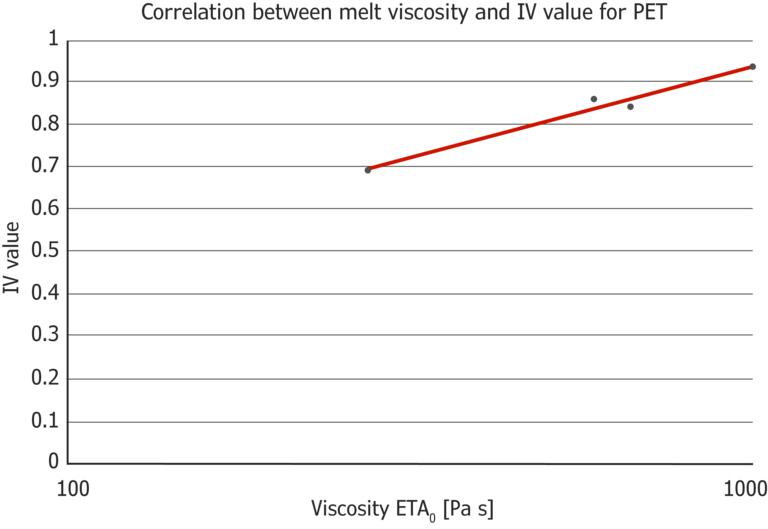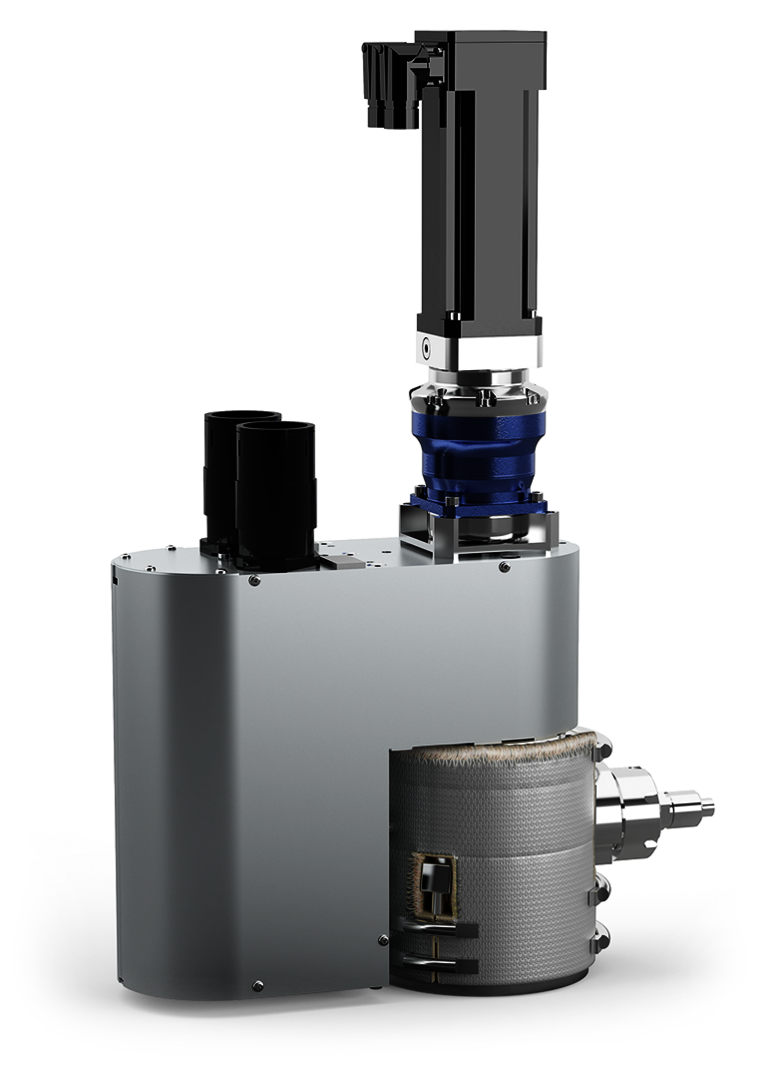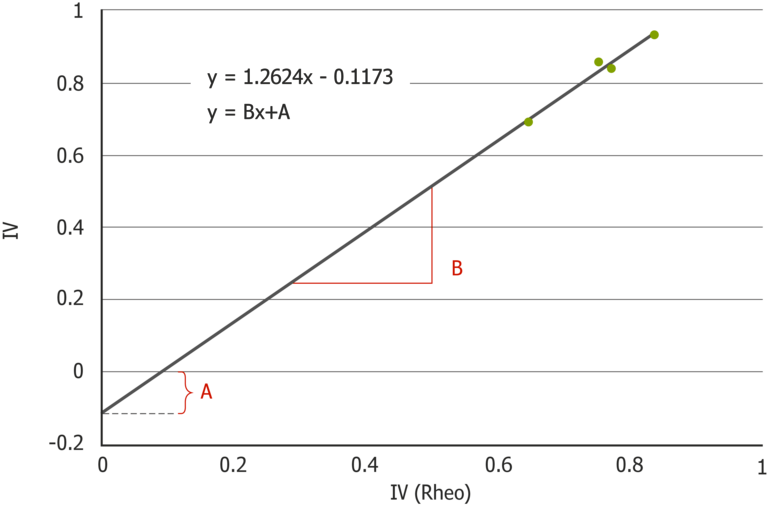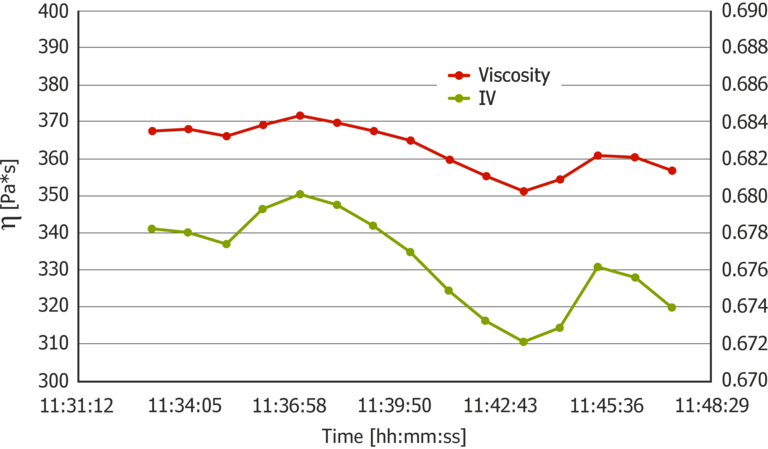Introduction
The Intrinsic Viscosity is also called Staudinger Index. Dissolved polymers increase the viscosity of the solvent, even if they are only present in very low concentrations. The viscosity increase due to the solute ultimately depends on its average molucalar mass. The determination of the intrinsic viscosity is in principle suitable for determining the mean molucalar mass of polymer samples, but it cannot in any way be determined directly in the process during polymer processing using the Staudinger index method.
Measurement during polymer processing or compounding of polymer is often done by using a GÖTTFERT Online Capillary Rheometers and which is essential for fast and effective process control parameters. Besides viscosity measurement, mainly MFR / MVR measurement is performed. The MFR/MVR measurement or viscosity measurement is established here as a reliable measurement method.
Determination of intrinsic viscosity during online quality control of polymers
The intrinsic viscosity (IV) measured by online capillary rheometers is determined via a correlation relationship between shear viscosity or melt flow rate (MVR) and intrinsic viscosity. Due to constant, material-independent measurement conditions, the melt viscosity at a fixed shear rate is particularly suitable for measurement with the Online-Rheometer.
As Fig. 1 shows, there is a very good correlation between melt viscosity in the plateau of zero viscosity and intrinsic viscosity.
 Figure 1: Correlation between melt viscosity and intrinsic viscosity (IV value)
Figure 1: Correlation between melt viscosity and intrinsic viscosity (IV value)
For continuous measurement of shear viscosity at a constant shear rate, the Side Stream Online-Rheometer called "SSR" as shown in Figure 2 is best suited. Here, the melt recirculation allows a material loss-free measurement with minimal installation and investment requirements. The viscosity measurement is carried out here at constant pump speed via the differential pressure measurement on the measuring capillary used. The constant pump speed generates a constant volume flow, with the result of a constant shear rate in the measuring capillary. Changes in the viscosity of the polymer then lead to pressure changes.
 Figure 2: Side Stream Online-Rheometer (SSR)
Figure 2: Side Stream Online-Rheometer (SSR)
The correlation is determined from a unique data set of measured melt viscosities and measured intrinsic viscosities (IV) which is representative of the product spectrum. The used data set should have been determined for at least four pairs of IV values and MFR / MVR values. As higher the number of value pairs as higher the accuracy of the IV value is. Once determined, this function can be used for other materials with a similar filler content.
The following table shows examples of pairs of values measured for PET to determine the correlation relationship for the IV value determination with the equation for converting the measured temperature-dependent viscosity into a temperature-invariant viscosity.
| Material | η0 measured with Online-Rheometer | IV-Rheo | IV-Solution viscosity measured with Ubbelohde Rheometer |
| A | 666 | 0.771 | 0.84 |
| B | 275 | 0.646 | 0.692 |
| C | 998 | 0.836 | 0.934 |
| D | 588 | 0.752 | 0.858 |
Table 1: Pairs of values for determining the correlation relationship for IV value determination with the equation for converting the measured temperature-dependent viscosity into a temperature-invariant viscosity.
Plotting the measured IV values versus the temperature invariant viscosity IV-Rheo provides the coefficients for the correlation relationship that is valid for PET.
 Figure 3: Determination of correlation coefficients - here using the example of PET
Figure 3: Determination of correlation coefficients - here using the example of PET
Measurements of PET
The coefficients determined for PET for the online determination of the IV value are entered into the control software of the Online-Rheometer.
The IV value is then continuously output and can be used, for example, for the addition of glycol to control the viscosity of the PET. By selecting appropriate measurement parameters and nozzle geometry, the measurement can also be performed in the SSR with short response times.
 Figure 4: Determination of melt viscosity and IV value in the process.
Figure 4: Determination of melt viscosity and IV value in the process.
The online determination of the IV value enables fast, easy-to-use and effective batch control as well as the possibility of regulatory intervention in the manufacturing process and especially the recycling of PET.